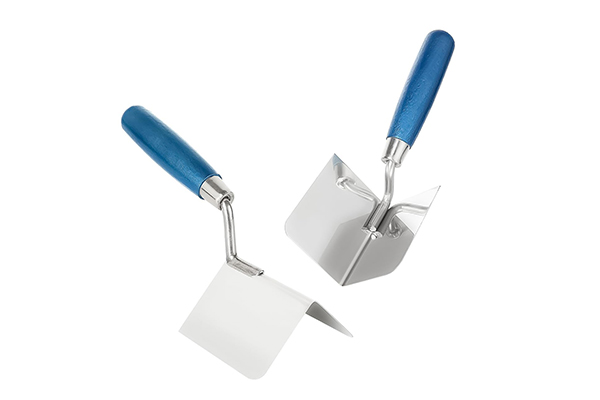In the world of construction and finishing work, having the right tools can make all the difference in the quality and efficiency of a job. One such specialized tool is the angle trowel, a must-have for professionals working with plaster, cement, drywall, and similar materials. While it may not be as commonly recognized as flat or notched trowels, the angle trowel plays a unique and crucial role in achieving clean, sharp finishes—especially in corners.
Definition and Design
An angle trowel, sometimes referred to as a corner trowel, is a hand tool used to finish inside or outside corners. Its defining feature is its V-shaped blade, which is bent at a 90-degree angle. This allows it to simultaneously smooth two intersecting surfaces—such as walls or a wall and ceiling—at the same time, creating a neat, uniform corner without overlap or gaps.

The handle is typically centered above the joint where the two flat sides of the blade meet, giving the user balance and control during application. Most angle trowels are made from stainless steel for durability and rust resistance, although carbon steel versions are also available. The handles can be made from wood, plastic, or rubberized materials to offer comfort and a firm grip.
Types of Angle Trowels
There are two main types of angle trowels:
-
Inside Corner Trowel: This type is used to smooth and shape inside corners, such as where two interior walls meet or where a wall meets a ceiling.
-
Outside Corner Trowel: This version is designed for finishing external corners, ensuring that edges are sharp, uniform, and reinforced against wear.
Some angle trowels are adjustable, allowing users to modify the angle for slightly obtuse or acute corners, which is helpful in rooms or buildings where corners are not perfectly square.
Applications in Construction
The angle trowel is particularly valuable in tasks involving:
-
Plastering: When applying plaster to walls and ceilings, especially around corners, a consistent finish is essential. The angle trowel ensures that both surfaces of a corner are smoothed out evenly, preventing ridges and lines.
-
Drywall Finishing: During drywall taping and mudding, achieving clean corners is often one of the more challenging parts. An angle trowel makes it easier to feather joint compound into corners without creating a buildup.
-
Cement Work: For masonry or concrete finishing, angle trowels help to finish corner joints cleanly, particularly in concrete columns, walls, and small architectural features.
Benefits of Using an Angle Trowel
-
Efficiency: By smoothing two surfaces at once, the tool saves time and effort compared to using a flat trowel on each surface individually.
-
Consistency: Angle trowels promote a cleaner, more professional finish, minimizing unevenness in corner work.
-
Ease of Use: With the correct technique, even beginners can achieve neat corners, making the tool useful for both pros and DIYers.
-
Less Waste: Proper use of an angle trowel can reduce the amount of material waste, as less compound or plaster is needed to rework messy corners.
Conclusion
An angle trowel might not be the first tool that comes to mind for a home improvement or construction project, but for those involved in finishing work, it’s indispensable. Whether you’re building a new wall, repairing drywall, or applying a fresh coat of plaster, an angle trowel helps ensure that corners look crisp, clean, and professionally done. In the hands of a skilled worker, it turns a tricky task into a simple, polished finish that stands the test of time.
Post time: Apr-17-2025






